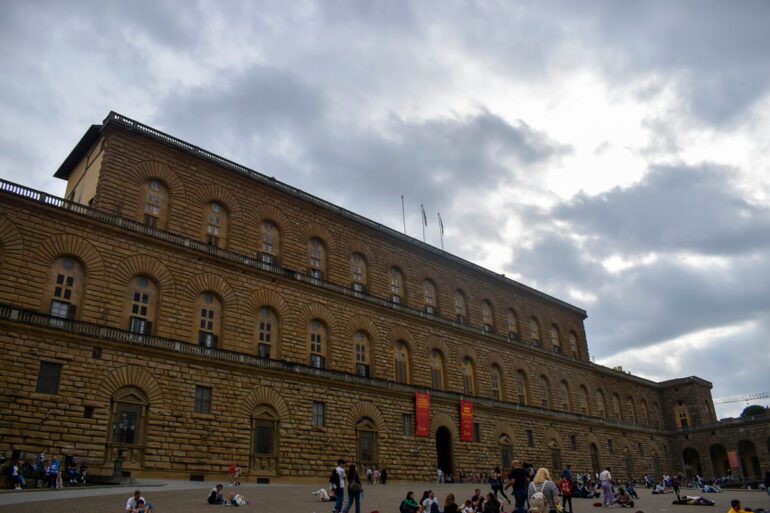Discover the former residence of the rulers of Florence, one of the city’s most important and astonishing museum complexes
On the other side of the Arno, by the foot of the Boboli Hill, Palazzo Pitti rises as this grand, Renaissance fortress that safeguards countless treasures. Originally built in 1446 by a Florentine banker, Luca Pitti, and bought a century later by Eleanor of Toledo, Cosimo I de Medici’s wife, the Palace’s existence began in 1550 as the Royal Residence of Florence. It housed the Medici family, all of their richness and scandals until 1727, when the house of Habsburg-Lorraine took over the power and later passed it onto the Royal House of Savoy in 1865.
Today, the Pitti Palace extends beyond its squared courtyard onto the Boboli Gardens, which are a worth visit, but inbetween its walls, history has been written and rewritten for centuries, a mixture of styles, periods and artistic masterpieces await you, as the complex comprises the Treasury of the Grand Dukes, the Museum of Russian Icons and the Palatine Chapel, the Palatine Gallery, the Imperial and Royal Apartments, the Gallery of Modern Art and the Museum of Costume and Fashion.
Treasury of the Grand Dukes
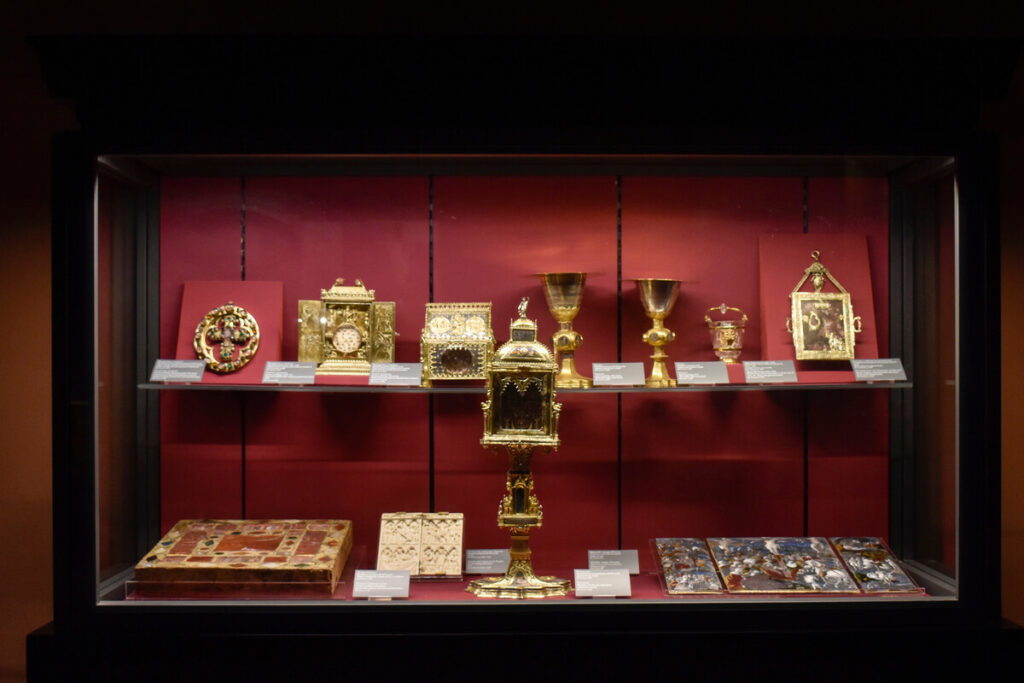
Located on the left on the ground floor, where the summer residences of the Medici used to be, the Treasury of the Grand Dukes holds a vast collection of ceramic vases and plates, dashing silverware, splendid cabinets and furniture, luxurious jewelry, and many other decorative pieces. Moreover, the rooms themselves are extraordinarily decorated, such as the Sala di Giovanni da San Giovanni, the welcoming room named after the artist who designed and painted its frescoes depicting the wedding of Ferdinando II de Medici and Vittoria Della Rovere.
Museum of Russian Icons and the Palatine Chapel
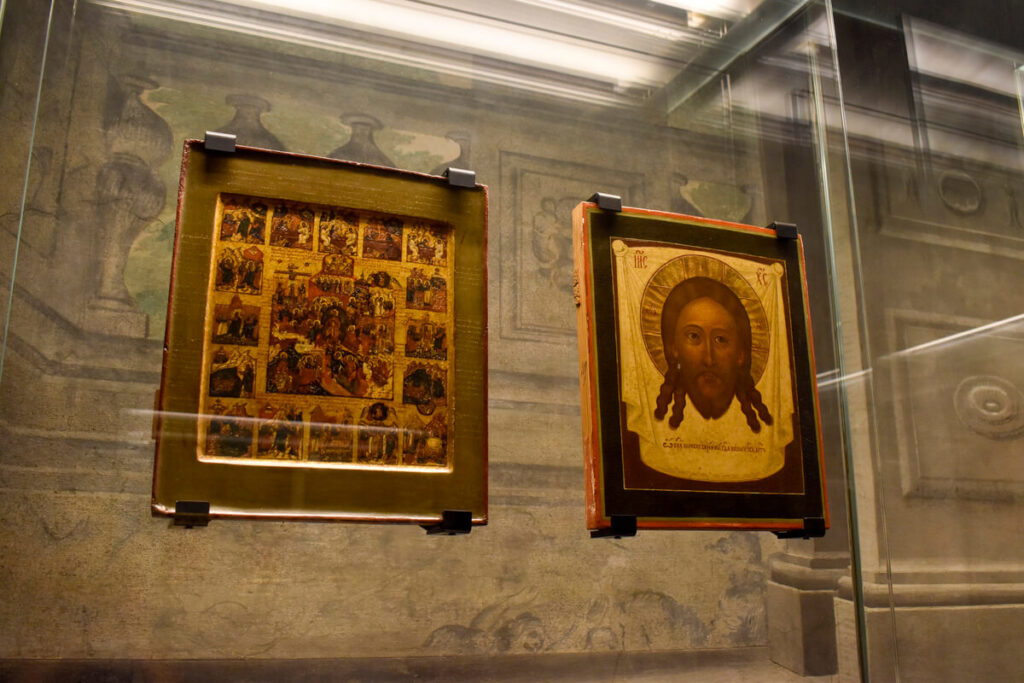
On the opposite side of the courtyard, the Museum of Russian Icons comprises over 60 religious artworks painted between the 16th and 18th centuries, which arrived from the Russian Empire to Florence during diverse periods. Alongside this collection, the Palatine Chapel, constructed by architect Bernardo Fallani and painted by Luigi Ademollo, beautifully recounts different biblical scenes like the Crucifixion of the Calvary and the Entry of Christ to Jerusalem.
Palatine Gallery
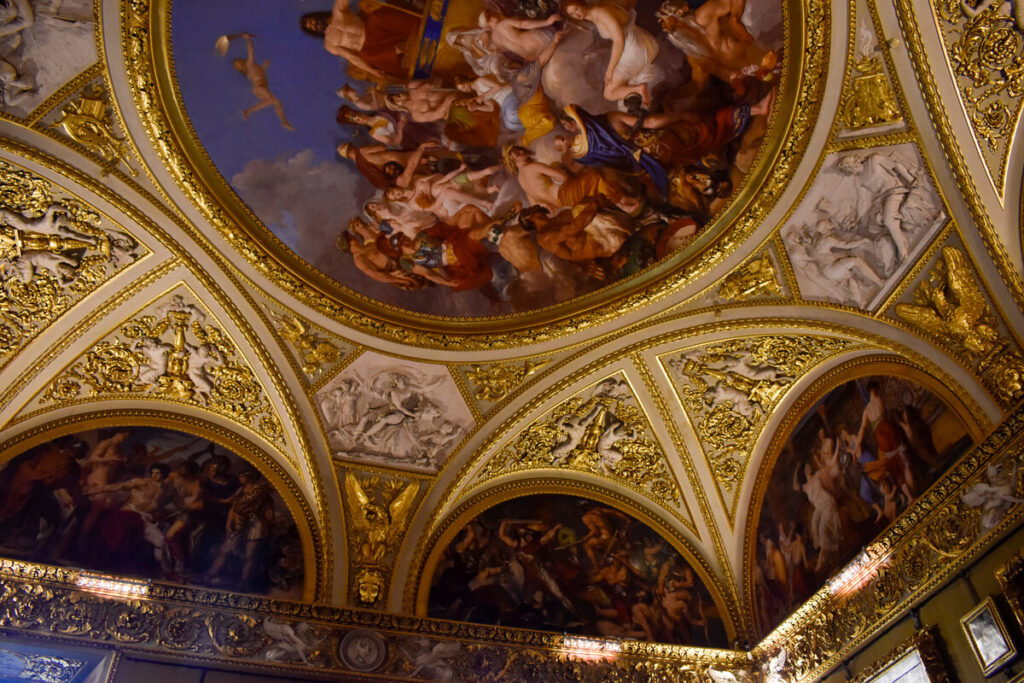
Going up the big staircase to the first floor, The Palatine Gallery is the great jewel of the palace. It displays the enormous Medici collection of over 500 paintings, which you can admire as you walk through the 32 lavished rooms, many of them redecorated during the 19th century, and enriched with sculptures, semi-precious stone furniture, stucco details, and frescoes that can certainly blow one’s mind away.
First up, the Sala Bianca, filled with glass mirrors, chandeliers, and white stucco decorations is famously known for being the place of the first Italian fashion shows in the 1950s. Then, a large corridor known as the Gallery of the Statues, officially welcomes you into the Gallery, alongside beautiful views overlooking the Boboli gardens.
In the following rooms, masterpieces by mostly Italian artists are on display. Sala Delle Allegorie, commissioned by Grand Duchess Vittoria in the 17th century, is one of the few which still has the original ceiling frescoes. L’Amore Dormente by Volterrano can be found in this room, and in Sala Delle Belle Arti, now repainted in a neoclassical style and originally the anteroom to the Grand Duchess Apartments . Also, look out for Rubens’s Cristo Risorto.
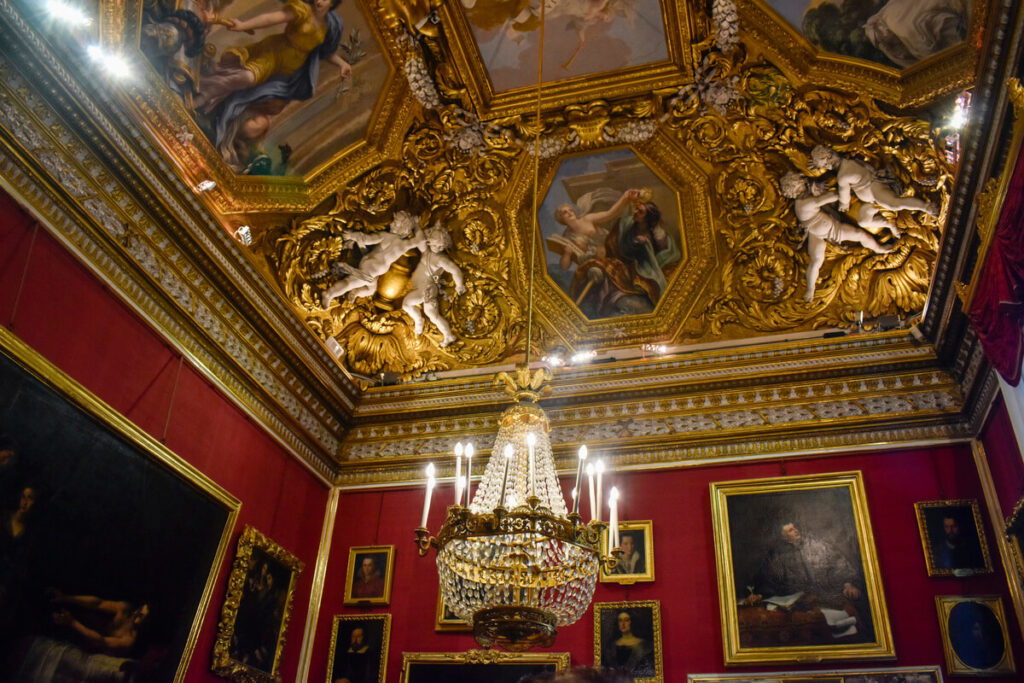
Sala di Ulisse’s ceiling depicting the hero’s return to Ithaca was commissioned by Grand Duke Ferdinand III of Habsburg on account of his own return as sovereign to his rightful place. Among the paintings here, there is also the Sacra Famiglia by Rafaello Sanzio. Sala dell’Educazione del Giove with its cerulean blue, diamond-like ceiling and Caravaggio’s Amore Dormiente is there for you to appreciate his mastery of the chiaroscuro technique.
Sala Della Stufa is one big masterpiece, although it only served as the Duke’s bathroom. With its golden decorations framing the columns and the colorful, lively paintings by Pietro da Cortona, it marks the birth of the great Baroque mural decoration, a new style in Florence back then.
Sala dell’Iliade, with its amazing circular fresco on the ceiling, is home to Artemisia Ghentilesnchi’s Giuditta e la sua ancella, and Sala di Marte has on display the great Flemish baroque piece by Rubens, Consequences of War. In Sala di Apollo you can find the unique double-sided painting, Ritratto del nano Morgante by Bronzino, which depicts Cosimo I’s favorite dwarf, viewed both from the front and from behind.
The Palatine Gallery is really an interminable display of masterpieces and astonishing decorations, and towards the end, you can see the recently restored Ritratto di Leone X con i Cardinali Luigi di Rossi e Giulio di Medici by Raffaello, along with a detailed explanation of the artistic process.
Imperial Royal Apartments
Currently closed due to restoration until further notice, the Royal Apartments occupy the rest of the first floor and they make up for an astonishing display of the dynasties that inhabited its walls, from the Medici family to the Grand Dukes of Habsburg-Lorraine and finally to the Royal House of Savoy. They all left their personal mark and taste leaving behind a set of rooms with a remarkable and rich mixture of styles and periods.
Gallery of Modern Art
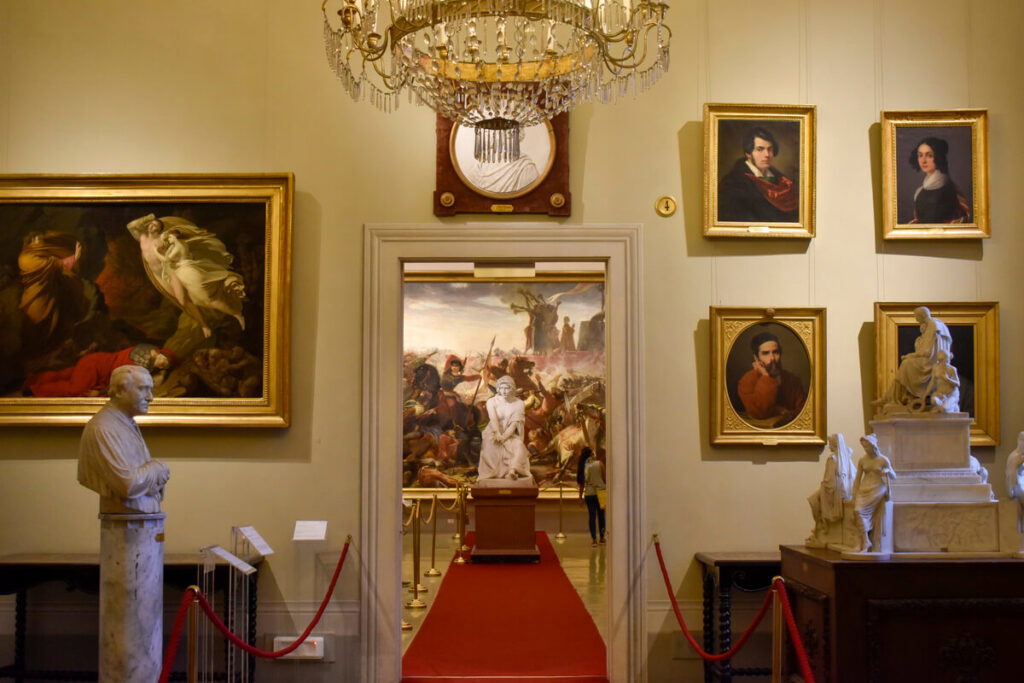
On the top floor, what once served as the residency of the Habsburg-Lorraine family, The Gallery of Modern Art holds a rich collection of paintings and sculptures from the end of the 1700s to the beginning of the 1900s. Mostly Italian masterpieces are held in these 30 rooms, which take you on a chronological journey, starting from the stoic Neoclassicism, to the emotional Romantic period, followed by the outdoor paintings of the Macchiaioli era, all the way to the Impressionist short, quick brush strokes, and finally wrapping up with some Symbolist and Divionist pieces.
Museum of Costume and Design
Although now closed for refurbishment works until further notice, the museum was founded in 1983 as the first one in Italy to be devoted to fashion. It holds a permanent selection that contains original clothing of the Medici family, as well as a rotating collection of garments and accessories of the last three centuries, including many famously worn by artists, singers, actors and other renowned celebrities.
The Palace also holds some temporary exhibitions, now on display, there is Sammy Baloji’s K(C)ongo, Fragments of Interlaced Dialogues. Subversive Classifications, a collection of archive material from the Kongo Kingdoms that arrived in Europe between the 16th and 17th centuries.
Furthermore, the complex also has a cafeteria, cloakroom, bookshop, toilettes and is equipped with an elevator, baby pit-stop room, and audio guides.
Opening hours
From Tuesday to Sunday, 8.15am to 6.30pm | Closed on Mondays, December 25 and January 1st
Tickets
Regular 10€ – Reduced 2€


